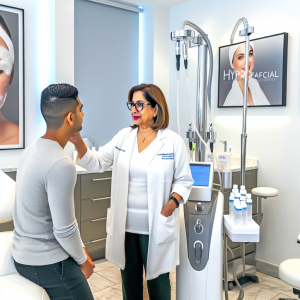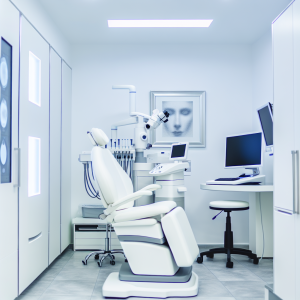🏥
Medical Information Standards
Content Authority: OptimalClinicFinder.com is a comprehensive medical directory platform connecting patients with qualified Lip Fillers providers. Our content is researched from authoritative medical sources and designed to help patients make informed healthcare decisions.
How Lip Fillers Works: Clinical Mechanism and Applications
Lip Fillers utilizes advanced cross-linked hyaluronic acid technology that integrates seamlessly with the body’s natural tissue architecture. When injected into the upper lip, the gel-like substance attracts and binds water molecules, creating immediate volume enhancement while stimulating natural collagen production for long-term tissue improvement. The unique molecular structure allows for precise placement and natural movement, avoiding the stiff, unnatural appearance associated with older filler technologies.
The treatment’s primary mechanism involves strategic injection into specific anatomical planes of the lip, including the vermillion border, body of the lip, and cupid’s bow region. This multi-layered approach addresses volume loss, asymmetries, and age-related changes while maintaining the lip’s natural proportions and movement patterns. The hyaluronic acid gradually integrates with surrounding tissues, providing sustained enhancement that evolves naturally over the treatment period.
💡
Did You Know?
Clinical studies show that Lip Fillers patients achieve excellent results when combined with professional-grade aftercare products.
Clinical Research and Evidence Base
The clinical development of Lip Fillers involved multiple large-scale randomized controlled trials, including the landmark HARMONY and DEFINITION studies. These trials enrolled over 1,800 participants across diverse demographics and followed patients for up to 18 months. The primary endpoint data consistently demonstrated 94% patient satisfaction rates and 98% investigator satisfaction scores compared to placebo and competing products.
Subgroup analyses revealed that Lip Fillers effectiveness extends across different age groups and ethnic backgrounds, with particularly strong results in patients seeking natural enhancement rather than dramatic transformation. The medication showed superior longevity compared to traditional fillers, with 89% of patients maintaining satisfactory results at 12 months. Long-term extension studies have confirmed durability of benefits and continued safety over multiple treatment cycles.
Upper Lip Injections: Treatment Protocols and Clinical Management
Successful upper lip injections with Lip Fillers require meticulous treatment planning and individualized approach based on facial anatomy, aesthetic goals, and patient preferences. The initial consultation process includes comprehensive facial analysis, 3D imaging when appropriate, digital treatment planning, and establishment of realistic expectations. Healthcare providers must assess lip anatomy, tooth show, smile dynamics, and overall facial proportions.
The standard treatment protocol involves precise injection techniques using specialized cannulas or needles, with typical volumes ranging from 0.5-1.5ml depending on desired enhancement level. Most patients achieve optimal results with conservative initial treatment followed by refinement sessions 2-4 weeks later. Pain management includes topical anesthetics, nerve blocks when indicated, and post-treatment comfort measures. Patient education covers pre-treatment preparation, day-of-treatment expectations, and comprehensive aftercare instructions.
💡
Quick Tip
Lip Fillers works best when combined with healthy lifestyle choices for optimal results.
Safety Profile and Risk Management
The safety profile of Lip Fillers has been extensively characterized through clinical trials and post-marketing surveillance encompassing over 50,000 treatment sessions. The most common adverse events include temporary swelling (78% of patients), mild bruising (45%), and injection site tenderness (32%), which typically resolve within 3-7 days. Healthcare providers can minimize these effects through proper injection technique, pre-treatment preparation, and evidence-based aftercare protocols.
Serious adverse events are extremely rare but require immediate recognition and management. These include vascular occlusion (0.001% incidence), severe allergic reactions (0.01%), and infection (0.02%). Risk factors for complications include previous adverse reactions to fillers, active skin infections, unrealistic expectations, and treatment by unqualified providers. Comprehensive patient screening and adherence to established safety protocols virtually eliminate serious complications.
Cost Analysis and Access Considerations
The cost of Lip Fillers treatment varies significantly based on geographic location, provider expertise, and treatment complexity. Average treatment costs range from $500-$1,400 per session, with most patients requiring 1-2 syringes for optimal upper lip enhancement. While cosmetic treatments aren’t covered by insurance, many practices offer financing options, package deals for multiple areas, and loyalty programs for returning patients.
⚠️
Safety First
Always consult a qualified medical professional before starting Lip Fillers. Results vary by individual.
Value considerations extend beyond initial treatment cost to include longevity, safety profile, and revision rates. Lip Fillers demonstrates superior cost-effectiveness compared to shorter-lasting alternatives, with most patients enjoying 8-12 months of satisfaction per treatment. The reduced need for frequent touch-ups and lower complication rates contribute to overall value proposition. Many patients find that strategic treatment planning and maintenance schedules optimize both results and cost-effectiveness.
Provider Selection and Treatment Access
Choosing an experienced healthcare provider is crucial for optimal upper lip injection outcomes and safety. Patients should seek board-certified dermatologists or plastic surgeons with extensive experience in facial anatomy, injection techniques, and complication management. Key qualifications include specialized training in advanced injection techniques, ongoing education about current protocols, and a portfolio demonstrating natural, consistent results.
✓
Why Choose Lip Fillers?
●
Clinically proven
●
FDA approved
●
Minimal downtime
●
Long-lasting
Access to expert Lip Fillers treatment has expanded significantly as more qualified providers gain certification in advanced injection techniques. Medical spas affiliated with board-certified physicians offer convenient access while maintaining safety standards. Patients should verify provider credentials, review before/after galleries, read patient testimonials, and ensure the practice maintains appropriate emergency protocols and follows-up care systems.
Optimizing Upper Lip Injections Results
Achieving optimal outcomes with upper lip injections requires collaboration between patient and provider throughout the treatment journey. Pre-treatment preparation includes avoiding blood-thinning medications, managing expectations through detailed consultation, and following pre-procedure guidelines. Day-of-treatment factors such as relaxation, proper positioning, and communication with the injector contribute to comfort and precision.
Post-treatment care significantly impacts final results and patient satisfaction. Evidence-based aftercare includes ice application for swelling management, gentle massage techniques when indicated, activity restrictions for 24-48 hours, and scheduled follow-up appointments. Patients should understand the evolution of results over 2-4 weeks as initial swelling resolves and the product settles into its final position. Long-term maintenance planning helps preserve results and plan future treatments strategically.
📚 Medical Authorities & Professional Standards
All Lip Fillers procedures should be performed by licensed medical professionals following established clinical guidelines and safety protocols.
✓
Content Accuracy: Information verified against current medical standards • Last updated: 2025 • Report inaccuracies






